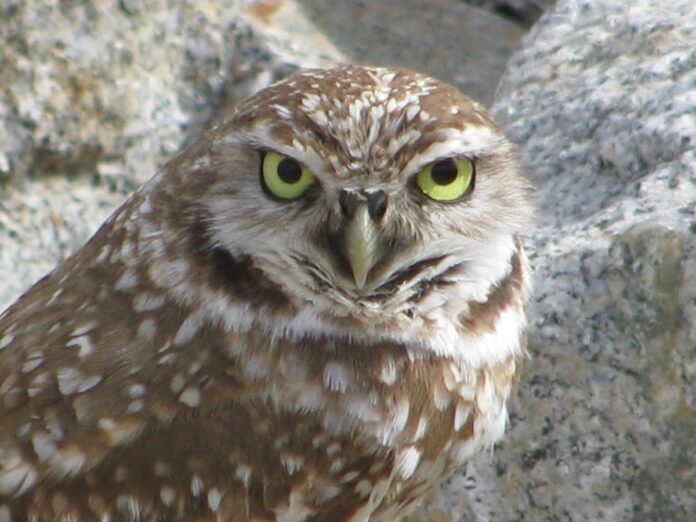
County of San Diego Parks and Recreations Land Use/Environmental Planner Jennifer Price said the Multiple Species Conservation Program is a long-term regional habitat program focused on balancing the protection of plants and animal species, and the demand for housing, non-residential development, recreation and agriculture.
The County partnered with 11 other jurisdictions in the early 90s to develop the MSCP. The County has three MSCP planning areas, the South County Plan, Draft North County Plan, and the future East County Plan area.
“DPR’s overall MSCP program focuses efforts to acquire, manage, and monitor preserved land in all three planning areas,” she said. “As of Dec. 31, 2021, DPR owns 44,200 acres of preserved lands in all three planning areas… Over the past 24 years, $221 million has been spent on acquisitions in all three plan areas to create or expand 41 county preserves.”
The County spent $125 million, and $96 million came from partnering industries and grants.
In Rancho Jamul, its aquatic invasive species removal program introduced some pond turtles in 2014 and did not get recruitment, so it is preparing the area by removing invasive species like crayfish, and frogs.
“Also, in Rancho Jamul we are working on burrowing owl management,” said California Department of Fish & Wildlife Senior Environmental Scientist supervisor Karen Drewe.
In 2007 the installation of special burrows was initiated. Identified the burrowing owl as a species to be considered for reintroduction in 2008. Added brush piles in 2014 to encourage California ground squirrels to establish a population. Removing excessive vegetation. Initiated artificial burrows in 2017.
Working with the San Diego Zoo, Drewe said it can translocate owls, conduct supplemental feedings, provide mice, monitor nests, and banding.
“We had 31 burrowing owls return from previous translocations, In Rancho Jamul, in 2021, we had 32 adults, one new burrowing owl arrived which is always very exciting, and we had five successful nests,” said Drewe. “We are continuing to monitor the burrowing owls, and the department is committed to doing so.”
Drewe said it established a new burrowing owl breeding node with its partners.
“Previously, the only breeding node was in Rancho Jamul. Although burrowing owls were thought to be widespread throughout San Diego County, with their diminishing numbers, the idea was to establish another breeding node, so all the focus is not only at Rancho Jamul,” she said. “We did have an aviary, we translocated owls, and 20 burrowing owls were fledged.”
Chula Vista hosted the annual Multiple Species Conservation Program workshop on Dec. 8, with representatives from several municipalities and local agencies to inform people about regional environmental efforts.
Specialist from the region came from Chula Vista, the County, the city of San Diego, California Department of Fish & Wildlife, San Diego County Water Authority, and San Diego Association of Governments.
City of Chula Vista Development Services Planning Manager Todd Philips said the MSCP was developed to preserve a network of habitat and open space, protecting biodiversity and enhancing the region’s quality of life on the local level. This workshop focused on MSCP accomplishments including habitat acquisitions, management and monitoring.
“The workshop provides the public and other interested parties to learn more about the unique habitats in the San Diego region, the role the MSCP plays in open space, regional conservation, and recent conservation and management efforts,” said Philips.
Chula Development Services Department Associate Planner Dai Hoang said over the past year, the city has focused on the Otay Ranch Preserve.
“The MSCP plan’s goals is to conserve public species, their habitats, such as the Quino Checkerspot butterfly,” he said.
Hoang said the Subarea Plan, adopted in 2003, provides conservation for 86 sensitive plant and wildlife species for the approximate 9,243 acres.
RECON Environmental Preserve Steward Biologist Anna Leavitt said the Otay Ranch Preserve is managed by both the city of Chula Vista and the County, together the Preserve Owner Manager (POM). She said the Salt Creek drainage area, west of the lower Otay Reservoir, and focused on the coastal cactus wren, and RECON’s habitation restoration efforts to increase the wren population, as well as protecting wren habitat from potential loss due to catastrophic fires. Coastal cactus wren is a special status species and a species of special concern through the California Department of Fish & Wildlife, and through other regional plans. Cactus Wren habitat requires thickets of cholla or prickly pear cactus for nesting. This habitat is not common, so it limits the habitats where these wrens can live. In Otay Ranch, cholla cactus has declined over the past 10 to 15 years due to competition of water resources, below average rainfall, and draught distress. The drought has declined the insect prey for foraging wren.
“Salt Creek is part of the ORP genetic cluster, and one of the four populations in San Diego County,’ she said, adding that there is a significant decline at Salt Creek in cactus wren territory.
Leavitt said U.S. Geological Survey monitoring data said the driving force behind low numbers of cactus wrens in the Otay population in 2014 were no longer in effect, in comparison to the significant decline in territories between 1992 and 2014.
Other factors that could have influenced breeding productivity at Otay were habitat restoration, control of non-native vegetation, and that the wren hatching and fledgling success in 2019 were a probable response to these efforts.













